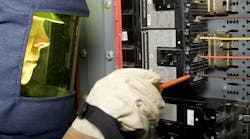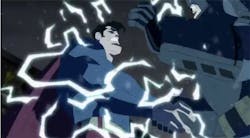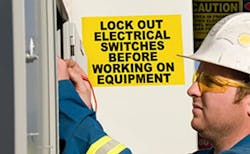The Electrical Safety Foundation International (ESFI) reported that there were 2,210 non-fatal electrical injuries in 2017. This was an increase of 35% as compared to 2016. These injuries could have been avoided by understanding common electrical hazards and conducting a regular electrical inspection. First, let’s go over the six mostcommon electrical hazards and how you can prevent or eliminate them:
Overhead Power Lines
They carry high voltages and can cause severe burns to the workers. Any contact with overhead power lines can result in electrocution. It is important to maintain distance from the overhead power lines and install safety barriers.
Power lines and electricity poles removed from Cumbrian Beauty Spot.
Damaged Equipment
Make sure all the tools and equipment are thoroughly checked for cuts, cracks, and damages on cords and wires. Replace or repair the damaged equipment immediately. Exposure to damaged tools can be extremely dangerous.
Inadequate Wiring and Overloaded Circuits
If you use wires of inappropriate size for current, it can cause overheating and electrical fires. Use a correct wire that is suitable for the required operation. Never overload an outlet and always use proper circuit breakers.
Exposed Electrical Parts
Exposed electrical parts may include open power distribution units, temporary lightning or detached insulation parts. These parts can cause shocks and burns. Secure the electrical parts with proper guarding mechanism and repair expose parts immediately.
Screengrab via YouTube/"Batman: The Dark Knight Returns, Part 2"
Improper Grounding
You can eliminate the risk of electrocution by properly grounding the equipment. Never remove the metallic ground pin as it can return unwanted voltage to the ground.
Damaged Insulation
Damaged insulation can cause fires, shocks, and burns. Replace the damaged insulation and turn off all the power before doing so. Never cover the damaged insulation with electrical tape.
How to Reduce Risk by Implementing Hierarchy of Controls
Elimination
It is the most effective hazard control and it involves removing the hazard physically. For example, you can move the power control station from a raised platform to the ground level. This makes sure that the employees do not have to work at heights and risk a fall.
Substitution
Substitution is the second most effective hazard control. Here, you will have to replace a severe hazard with something that does not produce any hazard. Examples would be substituting floor paint with textured floor to prevent slips and falls or replacing lead-based paint with titanium white. For this hazard control to be effective, the replacement must not produce another hazard.
Engineered Controls
Next in the line comes engineered controls. It does not eliminate the hazards but helps in isolating people from hazards. It involves employing a physical barrier between the workers and the hazard.Some examples include machine guards, railings or locked-out machines. The cost of engineered controls would be higher initially but they result in minimizing future costs.
Administrative Controls
This is when you change the way people work in the facility. You can use specific policies that help in limiting employee exposure to a hazard.Administrative controls include employee training, procedural changes, installation of signs or putting up warning labels.
Personal Protective Equipment
Personal Protective Equipment (PPE) includes protective clothing and equipment that limit employee injuries from a harmful event. These include gloves, steel-toed boots, hard hats, arc-rated clothing, high-visibility clothing, a fall harness, and safety glasses. This is the least effective type of hazard control.
Identifying electrical hazards and raising awareness about the same goes a long way in preventing electrical accidents. You can hit your safety goals by implementing the right measures within the facility. Never discount the electrical dangers present in your facility and constantly work towards mitigating the risks to create a safe working environment.
Jeson Pitt is the online marketign manager for D & F Liquidators Inc.


